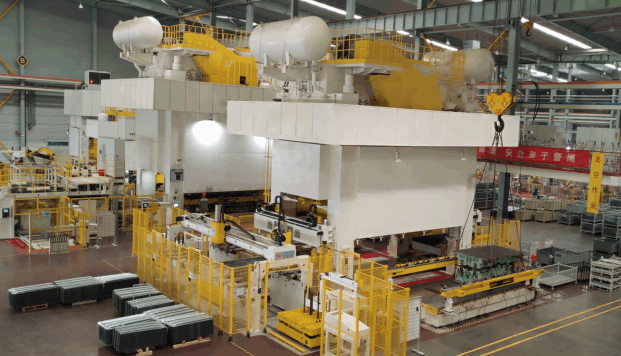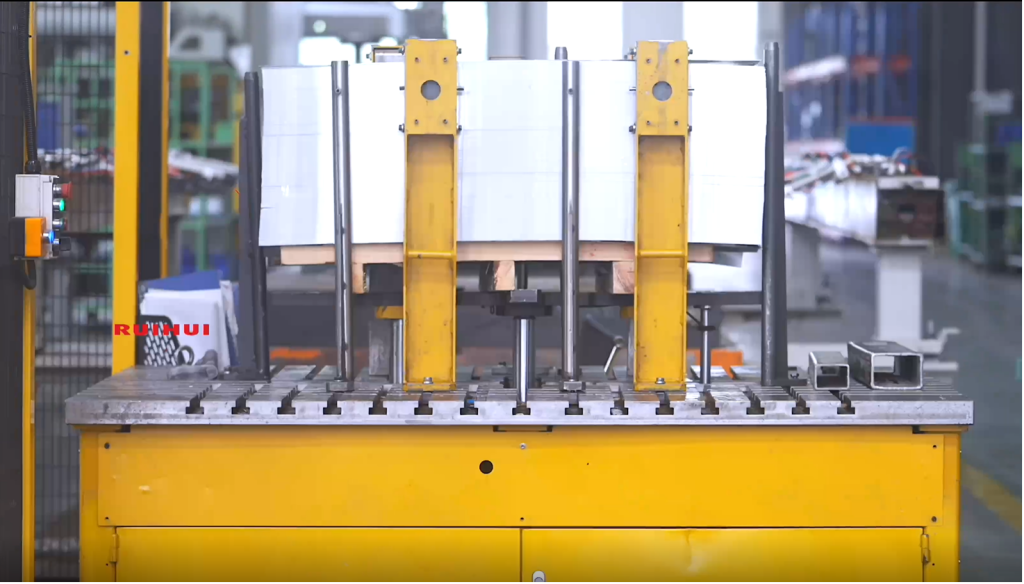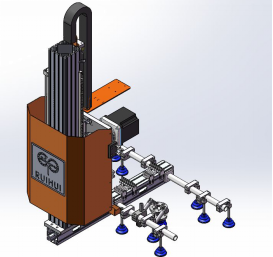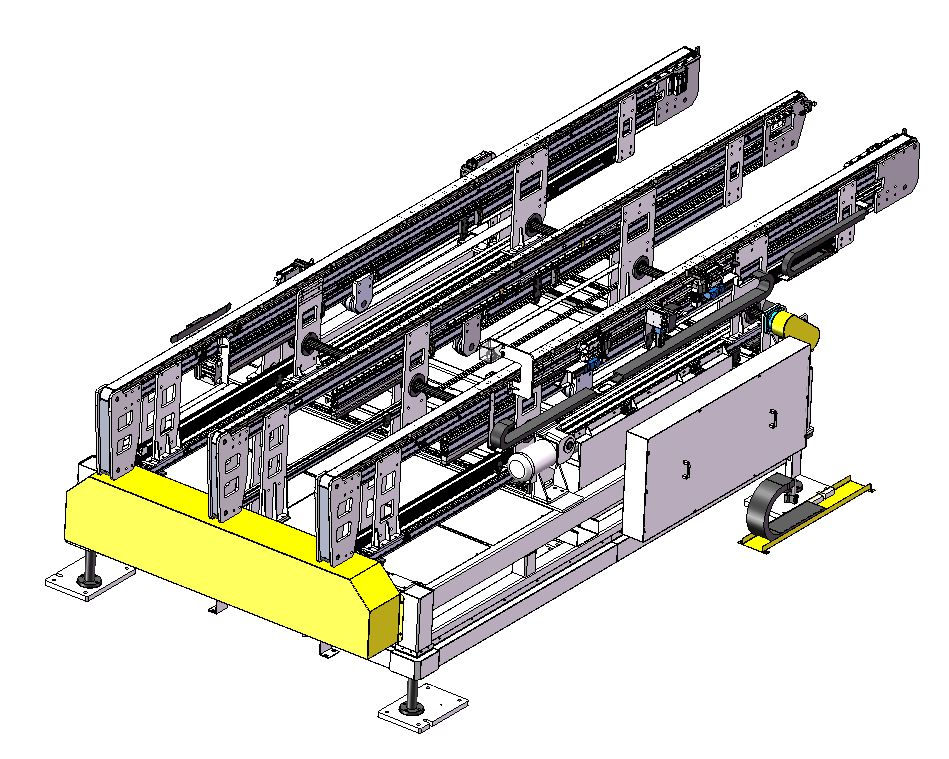The dual-station destacking 3-axis transfer can handle the destacking and conveying of both rectangular and irregular-shaped material sheets simultaneously. This design also facilitates the mixed use of steel and aluminum sheets during the destacking and conveying process, and additionally supports the handling of tail materials during coil production.

Stacker Trolley
The material stacks are arranged on the stacker trolley according to requirements. The lifting mechanism raises the material stacks to the separation area for separation, with the separation height controlled by sensors. This achieves the separation of a specified number of sheets and completes the automatic switching of material stack splitting. There are two sets of trolleys, allowing for automatic switching to ensure uninterrupted production.
Advantages: The trolley base is made of a solid iron plate, with a high density of ejector pin holes. The use of ejector pins effectively addresses the lifting of irregularly shaped materials. It can be suitable for the production of material sheets of various shapes and sizes. Specialized tooling can be used for material stack positioning, enabling rapid and accurate positioning of the stacks.

Destacker Transfer

Two sets of destacker transfers alternately pick up material sheets from the same coil trolley, and then deposit the sheets onto a magnetic conveyor belt. A vacuum suction cup is used to pick up the sheets, with a servo motor driving the transfer to move up and down for material destacking and laterally for positioning. The suction cup is equipped with a negative air pressure vacuum generator, which ensures stable suction while picking up the sheets and simultaneously monitors the suction stability. The destacker transfers are driven by servo motors and equipped with balancing cylinders, enabling rapid material destacking over long strokes.
Advantages: The machine frame has been reinforced through design to ensure stability and minimize vibration during the rapid material retrieval process by the destacker transfer. The destacker transfer features a lightweight structure equipped with a balancing cylinder, ensuring stable and swift operation.
Magnetic Conveyor
The magnetic conveyor is equipped with automatic adjustment functions such as front-end extension/retraction, height adjustment, tap centering, and sensor detection, etc. The conveyor belt automatically senses the position of the material sheets that it receives, uses servo-driven tapping for centering, and performs double-sheet detection during the conveying process. At the zero station, a transfer clamps and transports the sheets into the mold.
Advantages: The magnetic conveyor consists of multiple conveyor belts, with the outer belts capable of being folded down to better accommodate the production of materials of different sizes. The material sheets are controlled by electromagnetic adsorption, making the material conveying more stable and controllable. The conveyor belt structure is proven, with individually driven sheet conveying to match high-takt production.

3-Axis Transfer

The 3-axis transfer is fully synchronized with the press crankshaft angle through an encoder. Based on the feedback data from the encoder, the servo motors are controlled to precisely and accurately position the three axes according to the pre-programmed motion trajectory. The three axes employ gear-rack transmission, and Japanese-made linear guide accessories ensure high precision.
Advantages: The handling rod is welded and processed using Ruihui’s unique technology, and the structure consists of four steel plates of varying thicknesses, which can ensure stable and reliable handling of large-tonnage long worktables. The Z-axis balancing cylinder adopts a cylinder developed by Ruihui, which plays a crucial role in overall lifting stability. It can accommodate various types of clamping hand installations.

